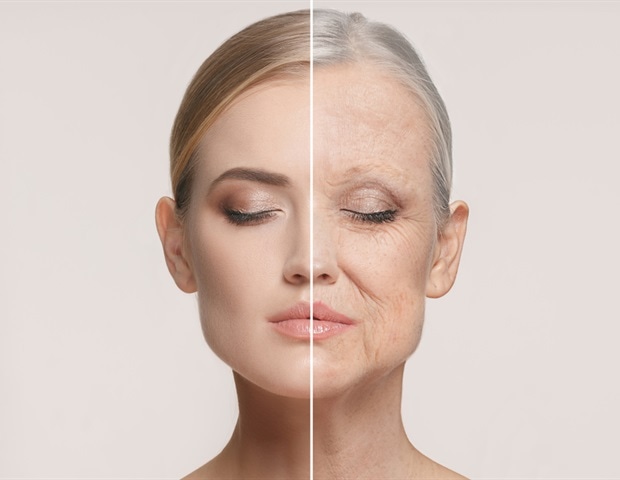Drinking water quality violations disproportionately affect the most vulnerable communities, study reveals
Drinking water quality violations disproportionately affect the most ... News-Medical.Net


A Study on Drinking Water Quality Violations and Social Vulnerability in the United States

A new study published in IOP Publishing’s journal Environmental Research Letters examines the links between drinking water quality violations and social vulnerability in the United States, revealing that these violations disproportionately affect the most vulnerable communities. Approximately 70% of the population affected ranked in the highest social vulnerability category, with many different social parameters, beyond income, linked to different drinking water quality violations.
Introduction
The study, led by researchers from the Jackson School of Geosciences, University of Texas in Austin, used new water quality data that reflect actual water distribution, not administrative boundaries, along with improved definitions of disadvantaged communities and social vulnerability. The improved model identifies more than three times the number of affected people than predicted by current federal environmental justice assessment tools.
Challenges in Ensuring Safe Drinking Water
While most Americans have access to safe drinking water, around one in ten people were exposed to a health-based water quality violation between 2018 and 2020. In the United States, supplying high-quality water is increasingly challenging due to an aging and underfunded drinking water infrastructure. The largest causes of health-based violations in community water systems are disinfectants and byproducts related to water treatment, followed by naturally occurring contaminants (such as arsenic and radionuclides) and human-caused contaminants such as nitrates.
Assessing Communities and Groups Affected by Water Violations
In assessing which communities and groups are most affected by water violations, previous research has been limited by data sets that are based on state and administrative boundaries that hide the cross-border nature of water distribution. Federal environmental justice assessment tools have primarily focused on household income as an indicator of social vulnerability, potentially neglecting key data-available aspects of vulnerability. This study instead looked at data based on community water systems across the whole country in relation to an improved measure of social vulnerability, the mSVI, developed from a tool from the Center for Disease Control, and informed by more recent literature and data analytics.
Importance of Defining Disadvantaged Communities
Proposed federal drinking water infrastructure funding requires individual states to allocate over 49% of the funding to disadvantaged communities (DACs). However, states have substantial discretion in defining DACs, resulting in large variations in definitions across the US. This study suggests that a broader definition of DACs, beyond household income, should be considered, as mSVI captures three times more of the affected population than household income alone.
“Our detailed analysis of the linkages of drinking water quality violations to social vulnerability can help inform guidance for effectively distributing infrastructure funding and designing interventions to ensure more equitable drinking water quality nationally.”
– Bridget Scanlon, Senior Research Scientist for The Bureau of Economic Geology at The University of Texas
Conclusion
Dr. Scanlon published her research through a transformative agreement between IOP Publishing and The University of Texas System. This agreement enables corresponding authors at the university to publish their work in more than 70 IOP journals at no cost to them. Articles published under a transformative agreement are immediately available and free for everyone to read.
Sources
Journal Reference:
- Scanlon, B. R., et al. (2023) Drinking water quality and social vulnerability linkages at the system level in the United States. Environmental Research Letters. doi.org/10.1088/1748-9326/ace2d9.
SDGs, Targets, and Indicators
| SDGs | Targets | Indicators |
|---|---|---|
| SDG 6: Clean Water and Sanitation | 6.1 By 2030, achieve universal and equitable access to safe and affordable drinking water for all | Number of people exposed to health-based water quality violations |
| SDG 10: Reduced Inequalities | 10.2 By 2030, empower and promote the social, economic, and political inclusion of all, irrespective of age, sex, disability, race, ethnicity, origin, religion or economic or other status | Proportion of population affected by drinking water quality violations in vulnerable communities |
1. Which SDGs are addressed or connected to the issues highlighted in the article?
The issues highlighted in the article are connected to SDG 6: Clean Water and Sanitation and SDG 10: Reduced Inequalities.
2. What specific targets under those SDGs can be identified based on the article’s content?
Based on the article’s content, the specific targets that can be identified are:
- Target 6.1: By 2030, achieve universal and equitable access to safe and affordable drinking water for all.
- Target 10.2: By 2030, empower and promote the social, economic, and political inclusion of all, irrespective of age, sex, disability, race, ethnicity, origin, religion or economic or other status.
3. Are there any indicators mentioned or implied in the article that can be used to measure progress towards the identified targets?
The article mentions an indicator that can be used to measure progress towards the identified targets:
- Number of people exposed to health-based water quality violations: This indicator can be used to measure progress towards Target 6.1 of achieving universal access to safe drinking water.
- Proportion of population affected by drinking water quality violations in vulnerable communities: This indicator can be used to measure progress towards Target 10.2 of reducing inequalities and promoting social inclusion.
4. Table: SDGs, Targets, and Indicators
| SDGs | Targets | Indicators |
|---|---|---|
| SDG 6: Clean Water and Sanitation | 6.1 By 2030, achieve universal and equitable access to safe and affordable drinking water for all | Number of people exposed to health-based water quality violations |
| SDG 10: Reduced Inequalities | 10.2 By 2030, empower and promote the social, economic, and political inclusion of all, irrespective of age, sex, disability, race, ethnicity, origin, religion or economic or other status | Proportion of population affected by drinking water quality violations in vulnerable communities |
Based on the analysis of the article, the identified SDGs, targets, and indicators are as follows:
- SDG 6: Clean Water and Sanitation – Target 6.1: By 2030, achieve universal and equitable access to safe and affordable drinking water for all. Indicator: Number of people exposed to health-based water quality violations.
- SDG 10: Reduced Inequalities – Target 10.2: By 2030, empower and promote the social, economic, and political inclusion of all, irrespective of age, sex, disability, race, ethnicity, origin, religion or economic or other status. Indicator: Proportion of population affected by drinking water quality violations in vulnerable communities.
Behold! This splendid article springs forth from the wellspring of knowledge, shaped by a wondrous proprietary AI technology that delved into a vast ocean of data, illuminating the path towards the Sustainable Development Goals. Remember that all rights are reserved by SDG Investors LLC, empowering us to champion progress together.
Source: news-medical.net

Join us, as fellow seekers of change, on a transformative journey at https://sdgtalks.ai/welcome, where you can become a member and actively contribute to shaping a brighter future.







